If Trump has done anything to help the markets, we believe it has been the dramatic cut in regulations under his administration. The chart below, which shows the number of pages in the Federal Register, is our favorite measure to illustrate this.
Whenever a new regulation is made, it must be chronicled in the Federal Register. So this chart is a good measure of regulatory activity. In the last years of the Obama administration, regulatory activity went parabolic, hitting nearly 97,000 pages in a year. Under Trump, this has dramatically reversed. The annualized pace through November 8 is under 61,000 pages, a level not seen in decades! If this pace holds, it will easily be the largest decline in regulatory activity in history.
We believe the effect of regulation on the economy is underappreciated, maybe because it is boring and not as interesting as tax cuts. That said, last year the Competitive Enterprise Institute released a study arguing that the cost of complying with regulation costs businesses more than they pay in taxes. So, a regulatory rollback of the dramatic scale we have seen under Trump could be a bigger positive for the economy than any of the proposed tax cuts.
Commitments of Traders
We have been highlighting the over-speculated nature of currencies over the past several weeks. This is another way of saying the dollar is too hated.
The first chart below shows the euro. The net position of large specs (second panel) remains near multi-year extremes. This is a contrarian category, meaning when it is at an extreme, look for the markets to reverse course. The leveraged trader (third panel) and asset manager (bottom panel) are also contrarian categories and are consistent with the large speculator sell signal.
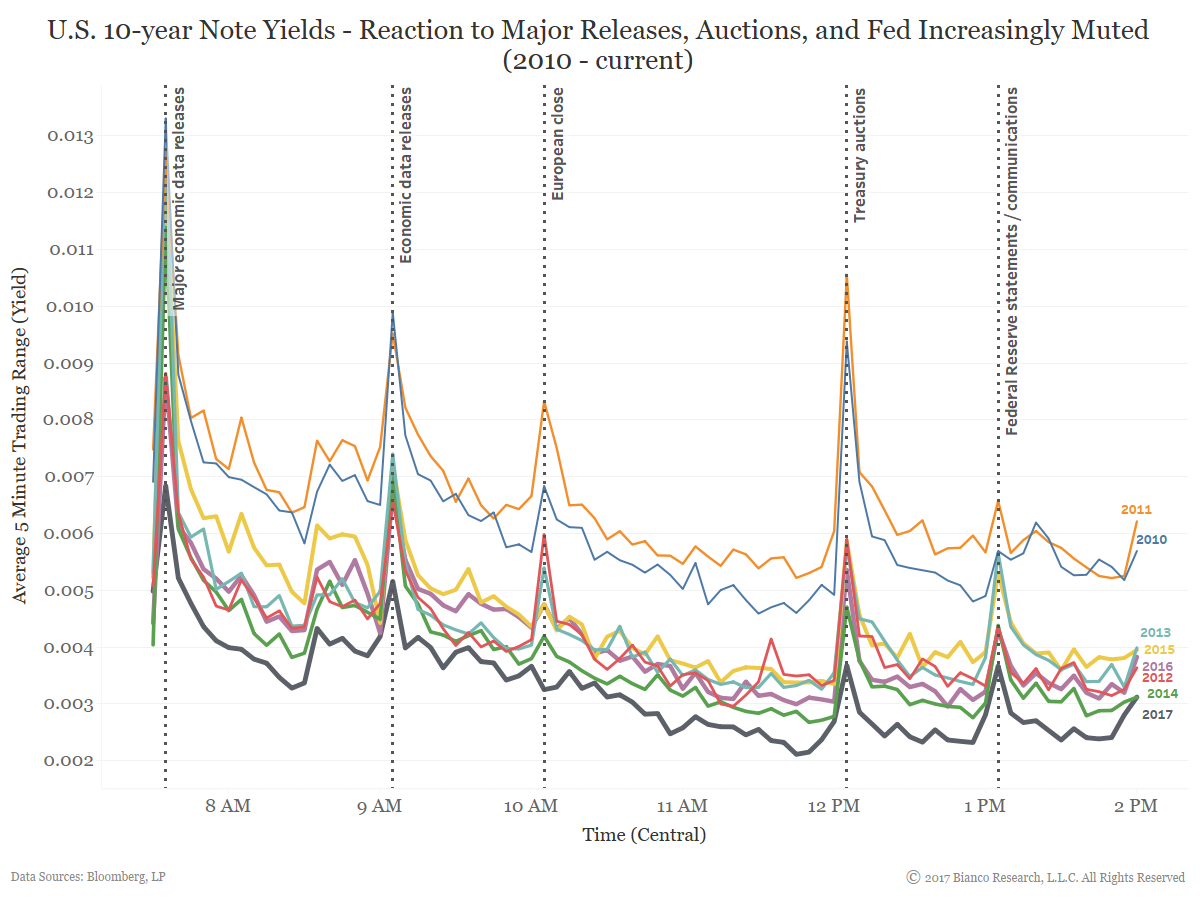
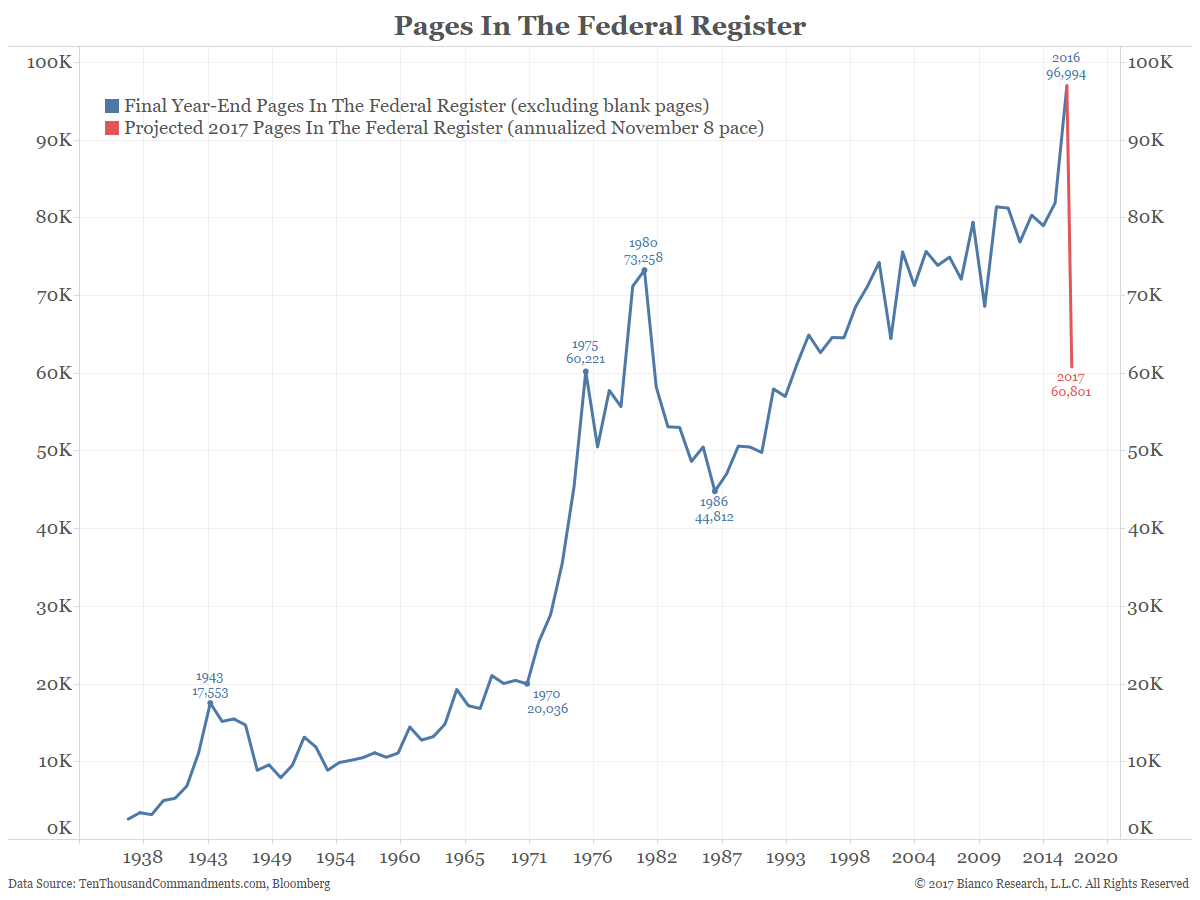
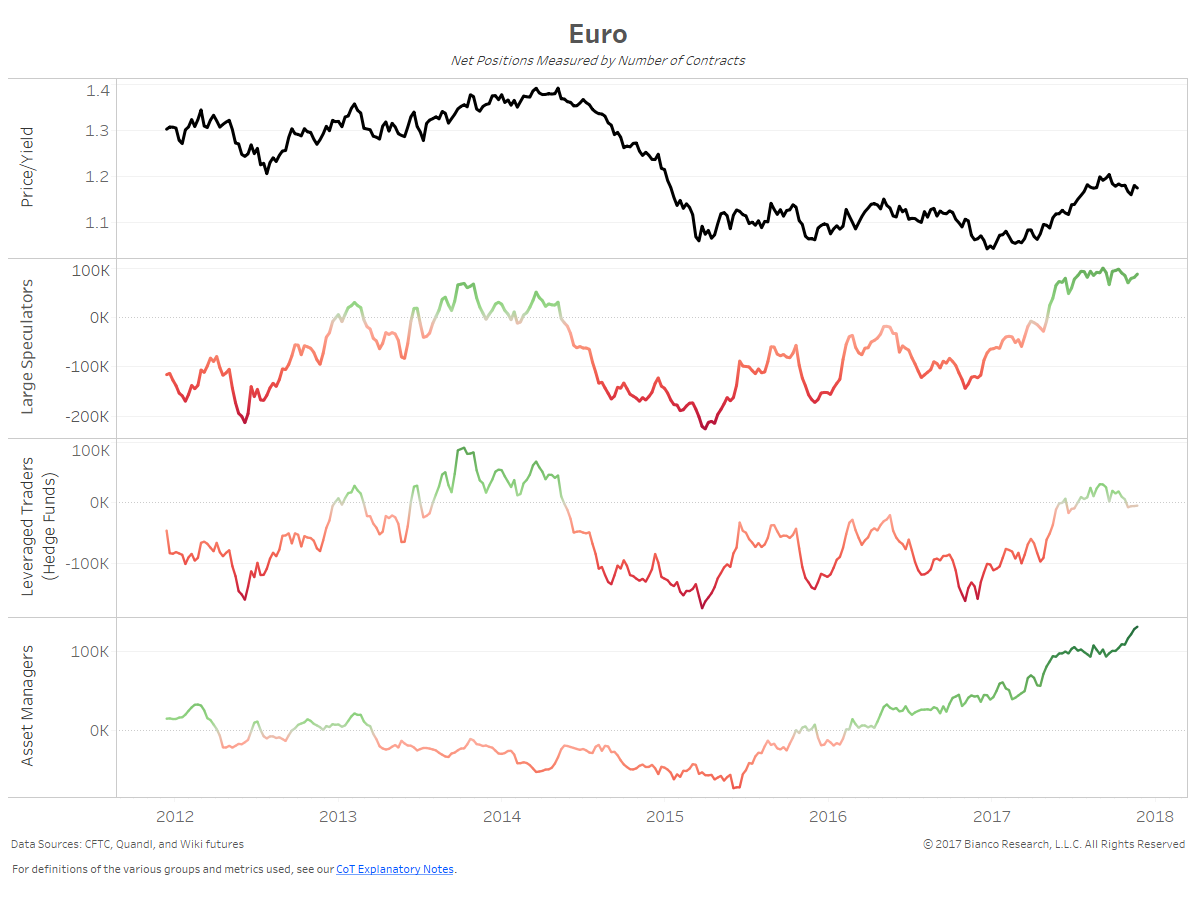
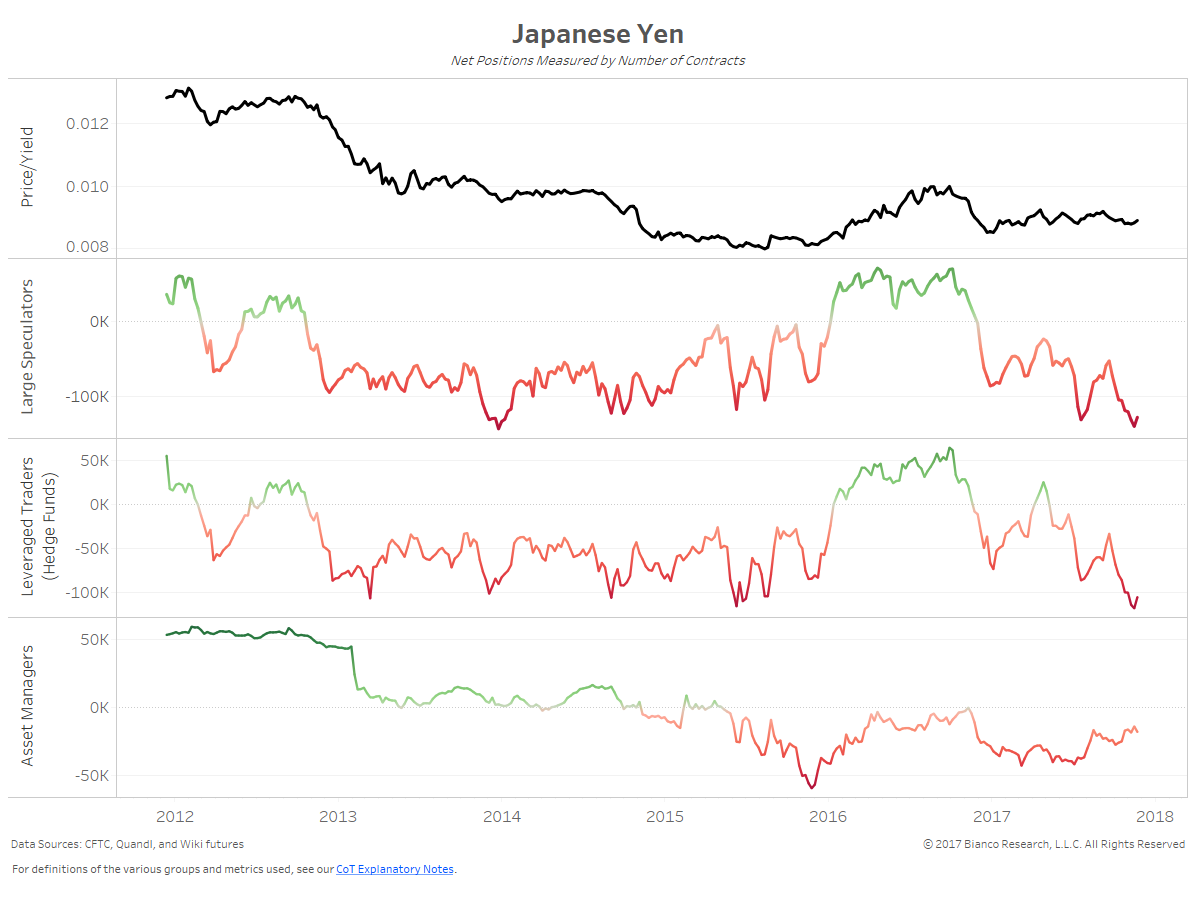
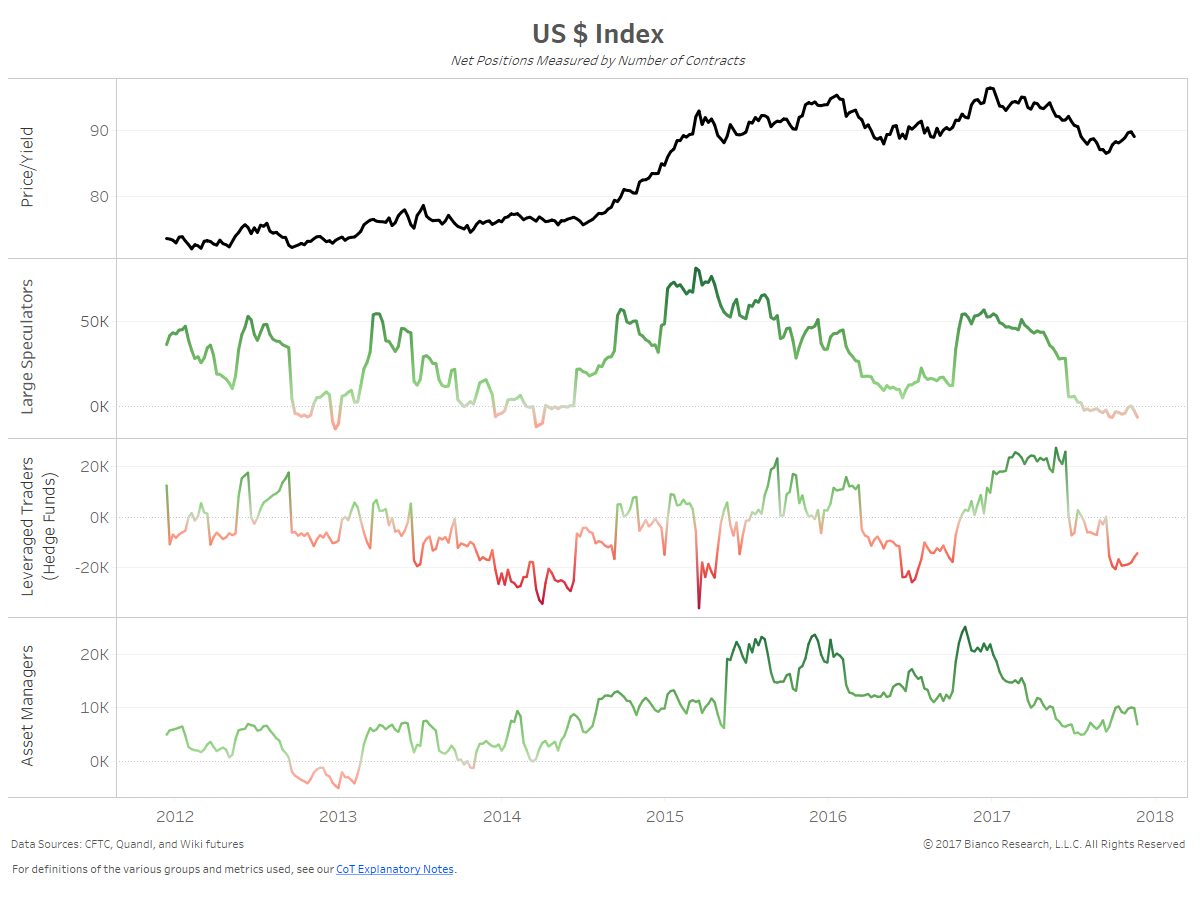
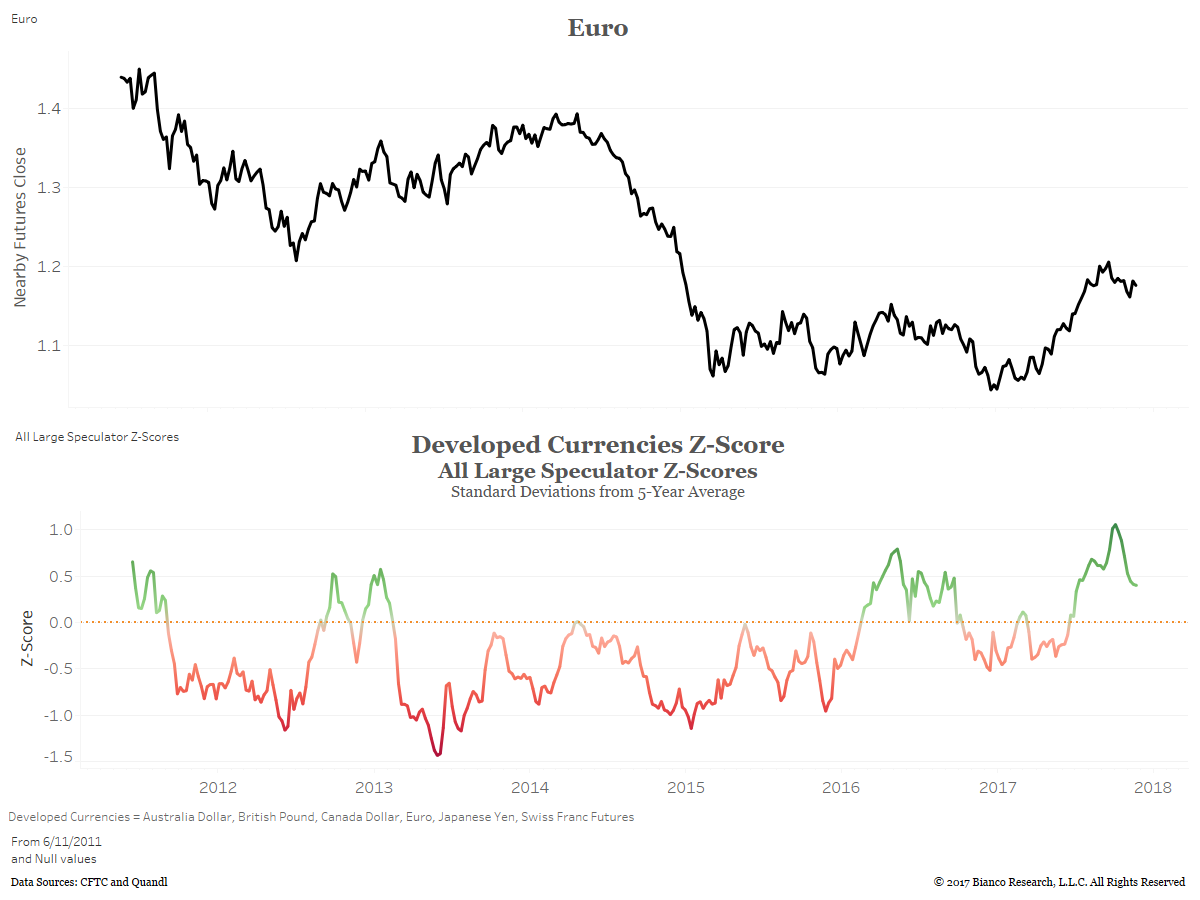
What’s In A Fed Statement?
The Fed wants to maintain a long-term focus to avoid getting tripped up by transitory and/or short-lived forces. However, their own use of ‘long-term’ versus ‘short-term’ in speeches and other releases indicates a short-term focus persists following the financial crisis.
The Federal Reserve had never pushed their models and projections as much as they did during the spring of 2017. Lagging inflation relative to employment is seemingly not due to transitory forces. This conundrum is forcing economists and Fed officials to question the Phillips Curve and historical relationships between wages and the approach of full employment.
Not surprisingly, Fed officials have recently diminished the frequency of model and forecast comments (top panel). Notably, the uttering of ‘confidence’ has also tumbled (bottom panel).
Machine Learning Dampens Volatility
The velocity of global fund flows have likely been significantly dampened by two key developments: 1) the growth of machines and 2) the heavy hand of central bank stimulus.
The chart below shows the U.S. 10-year note’s average five-minute trading range (yield) by year throughout the trading day. The dark gray line provides average ranges for 2017, which are by far the lowest post-crisis.
Economists’ estimates are missing actual economic data releases by the smallest margin in recorded history. The volatility of economic data surprise indices remains ultra-low, likely aided by technology’s ability to decipher reams of exponentially growing data.